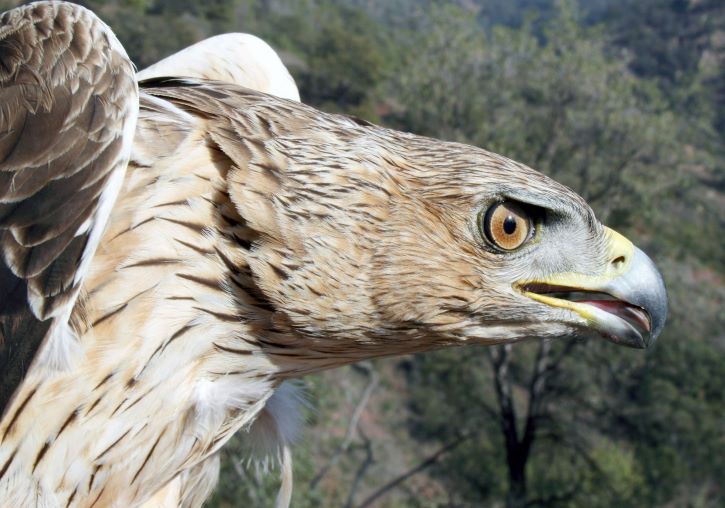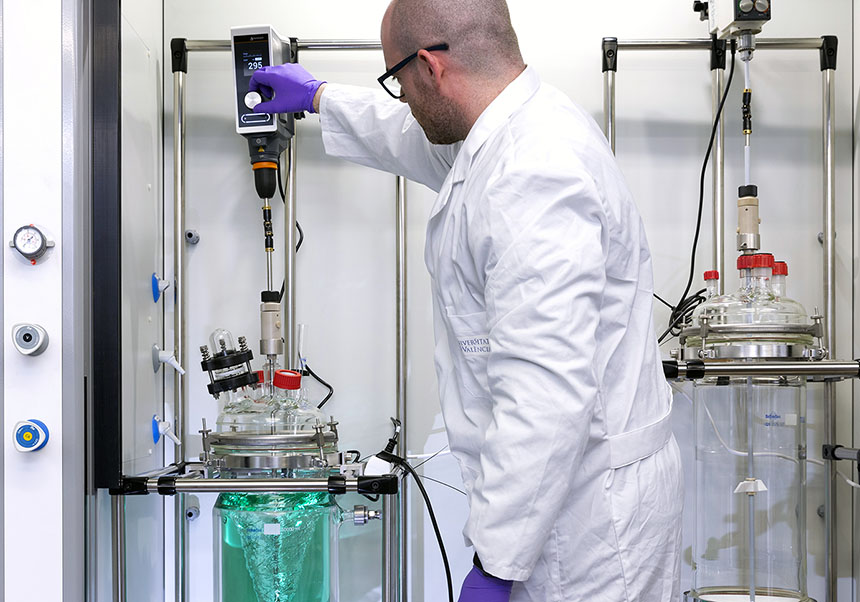The installation of cameras in Bonelli’s eagle nests causes the reproduction of the species to fail
- Science Park
- December 23rd, 2022

A team from the Cavanilles Institute of Biodiversity and Evolutionary Biology (ICBiBe) of the University of Valencia demonstrates how the installation of cameras inside Bonelli’s eagle nests in the south of the province of Castellón, for a study on the diet of this species, has caused detrimental effects on the few pairs of Bonelli’s eagle that still nest in the Valencian Community.
The Bonelli’s eagle has recently been reclassified as an endangered species in the Valencian Catalogue of Threatened Fauna and Flora Species due to the strong regression it has experienced in its Valencian population in recent decades. Specifically, the species has suffered a regression of almost 50% in the province of Castellón since the late 1990s, an area that includes all the territories monitored in the project. In the work, the researchers describe how the installation of video surveillance cameras by Environmental Agents of the Valencian Government has caused the repeated failure to reproduce this threatened species.
The Valencian Government, through the General Directorate for the Natural Environment of the Ministry of Agriculture, Rural Development, Climate Emergency and Ecological Transition, began in 2021 a project consisting of the installation of video surveillance cameras in Bonelli’s eagle nests.
As a result of the installation of cameras to study the diet of this species in the Serra d’Espadà Natural Park (Castellón) – a project of the General Directorate for the Natural Environment of the Ministry of Agriculture, Rural Development, Emergency Climate and Ecological Transition started in 2021– and due to the inconvenience caused by the intervention in the nests, as pointed out by the study published this week, two of the four Bonelli’s eagle pairs under video surveillance failed to reproduce in 2021 and six of the eight pairs monitored in 2022 also failed in their breeding attempts.
The worst reproductive parameters in 23 years of study
To carry out the study, the researchers have used a database with information on the reproduction of the species compiled annually between the years 2000 and 2022. In the scientific study, its main researcher, Pascual López, professor at the Faculty of Biology and researcher at the Cavanilles Institute of Biodiversity and Evolutionary Biology of the University of Valencia, shows how the reproductive parameters of couples subjected to video surveillance have been the worst recorded in the entire time series throughout the twenty-three years of study. In addition, the pairs that came to breed, despite the presence of the cameras less than a couple of metres from the nest, did so at unusually late dates for what is usual for the species, while others directly changed their breeding sites to several kilometres away from the place where they had the nests with the cameras installed. The rest of the couples in the province that were not subjected to video surveillance bred normally.
“The installation of cameras on dates close to the egg-laying phase, coinciding with the mating phase of the individuals, mostly inexperienced subadult birds, in combination with repeated visits to the nests once the cameras are installed to check the proper functioning of the system and correcting errors, particularly during the incubation period and early stages of reproduction, as well as the installation of cameras in an area subject to constant human disturbance such as the Serra d’Espadà Natural Park could explain these results”, explains Pascual López.
Reference to the original article:
López-López, P. Potential negative effects of the installation of video surveillance cameras in raptors’ nests. Sci Rep 12, 21969 (2022). https://doi.org/10.1038/s41598-022-26153-7
More information:
File in: Ciencias de la Vida















